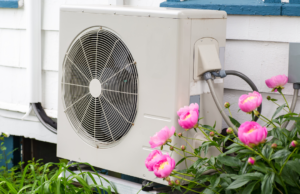As a sponsor of the 2021 Getting to Zero Forum, NYSERDA is committed to helping decarbonize the built environment. Here we’re highlighting an update on them following through with this commitment.
Originally posted by NYSERDA.
During the hottest days of the summer, the words “heat pump” don’t yet conjure images of cooling down. But they will. Heat pump technology has advanced and is proving to be one of the most versatile, efficient, and cost-effective ways to maximize comfort indoors, in the summer and across the seasons.
What makes heat pumps such cool tech?
First, they aren’t just about heat. And second, they don’t expend vast amounts of energy trying to warm or cool circulating air the way familiar HVAC technologies do. Instead, a heat pump works by efficiently removing or adding air.
In the summer, a heat pump removes warm air from inside space then pumps it outside. In the winter the cycle reverses, taking cool air from outside, warming it, then pumping it inside.
While heat pumps are more expensive on the front end than traditional HVAC systems, here are four ways they outperform over time and affordably maximize heating/cooling goals in commercial spaces:
1. Reduced Operation and Maintenance Costs
Compared to familiar HVAC systems, such as natural gas- and oil-powered hot air furnaces plus air conditioners, electric heat pumps require less service and maintenance and have a longer lifespan. Over time, repairs, replacements, and upgrades cost less.
2. Increased Comfort
 Heat pumps are perfect for office buildings where occupant comfort is a priority. Heat pumps can respond to multiple temperature zones, room to room, enabling employees to set specific comfort levels.
Heat pumps are perfect for office buildings where occupant comfort is a priority. Heat pumps can respond to multiple temperature zones, room to room, enabling employees to set specific comfort levels.
3. Reliability in demanding environments
Because heat pumps are a 2-in-1 technology, they can respond to extreme variabilities within the same building.
4. Responsiveness to sustainability goals
With zero combustion of fossil fuels, no fuel storage, and no carbon monoxide emissions, heat pumps will help your business significantly reduce its environmental impact.

